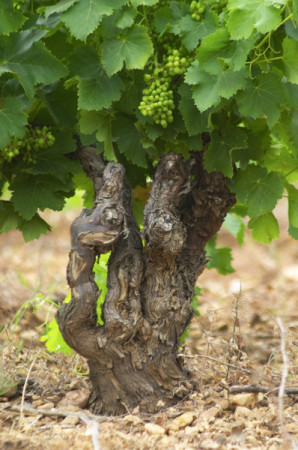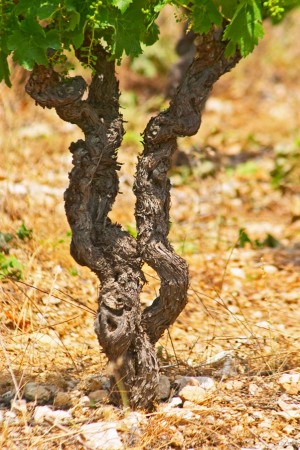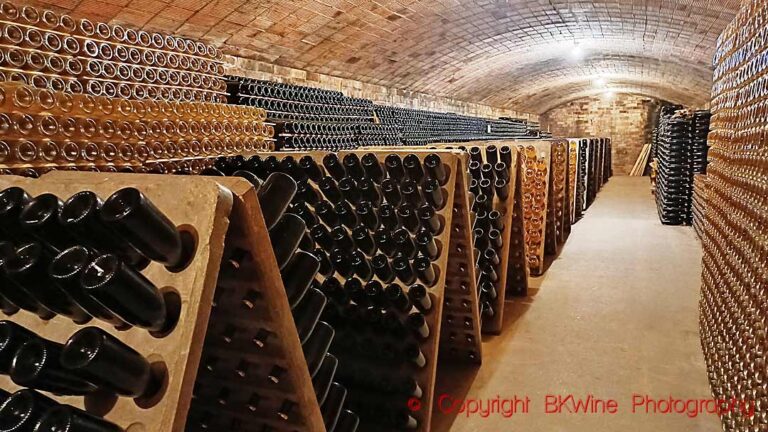Gredos. It’s not a misspelling of ‘credos’ or clever mispronunciation of ’Speedos’, rather a breathtakingly scenic mountainous area 1.5 hours drive west of Madrid called Sierra de Gredos. This recently emerged trend is based on old vine Garnacha and the local white Albillo Real fashioned, mostly by a younger crowd taking over from pensioners, often with organic growing, used large oak barrels along with the ancient style clay jars called ‘tinajas’, and no added yeasts into a niche that has caught on fire in Spain and a bit with geekier segments of the US/UK wine crowd.
The villages of El Tiemblo, El Barraco, Cebreros sport quiet forests and meadows, much steep soils composed of granite/schist/slate/sand, and a warm continental climate perched between 650-1200+ meters. Wines are generally regulated by law within the Vinos de la Tierra de Castilla y León though Gredos extends into three provinces: Ávila (all labeled VdT CyL), Madrid (D.O. Viños de Madrid), Toledo (D.O. Méntrida).
The area’s southern Alberche valley is all granitic sand with its western portion possessing the most mountain influence from altitude, diurnal variation, and the slightly guarded shadow it enjoys from rains originating from either south or north. Schist soils exists at El Tiemblo, Cebreros, and El Almendral though are less black than in the Douro, more than due to the presence of iron, feldspar and yellow-brown granite.
Garnacha here is dissimilar from those in southern France and South East Australia, being more acidic and tannic due in great part to its higher elevation and nutrient-devoid decomposed granitic soils. Various clones of Garnacha exist in the rustic Gredos area as they do in other regions.

New Spain Wines
“The difference between the Garnachas here and those people in the US have come to expect is a challenge,” shared Wendy Vallaster of New Spain Wines, a Canadian of many years resident here. “Here it’s all old vines grown at high altitudes giving the expected higher alcohols—we’re in central Spain with plenty of sun—but also higher acidity and tannins due to the altitude and very poor soils.” Harvests occur late September through the third week in October, with some vintage variation, though with the predominance of old vines this problem is more mitigated than in many wine regions.
Traditionally wine was made in a de facto natural manner, spontaneously fermented with native yeasts in tinajas dug 3⁄4 of the way into the earth; the cool temperatures provided by the ground and conical tinaja shape creating a perfect environment for decanting sediment and therefore a natural clarification.
For Vallaster and her life/business partner Javier Arauz, the maturation of these wines aren’t about releasing fruit following a ‘tannin fade’ but rather showing tertiary characteristics of forest floor and plants following five years from vintage. The higher altitudes and northern exposures, such as those of El Tiemblo and Peña Caballera, are what show the best of Garnacha. “The collaboration between producers here is unusually strong for Spain,” which goes some way in explaining the similarity between wineries’ vinification methods.
After looking for property for years on the south Spanish coast only to encounter bureaucratic hassles, a 2010 business trip brought them to this entrancing region. “After a few phone calls our home beckoned.” It was a former Wine Academy of Spain student of Arauz’s, Daniel Ramos, who gained their professional attention with Ramos telling them of his intent to make wine in Gredos. Following stints working in in Extremadura, Madrid, and finally with Telmo Rodriguez, he’s now the producer in Gredos with whom they’re most familiar.

“Most of the producers here are already being exported,” said Arauz. “The uniqueness of their style of Garnacha has received lot of attention in Spain, the US and the UK. Garnachas de Gredos is a project of those who want to make terroir-driven wines in a natural way with Viños de Cebreros the embryo of a new D.O.”
The ‘Garnacha de Gredos’ qualification stipulates that all Garnacha and Albillo grapes must be organically grown, plowing done to remove weeds and replenish soils with nutrients with horses used when available. Wine producer Fabio Bartolomei is the group’s treasurer. “Because of the varieties, the mountains, the soils this is a hidden treasure of an undiscovered region. Even the locals who make sweet wines at 17% aren’t aware of this potential.” He went on to explain the link of the refurbished coop winery in El Tiemblo he shares with Ramos to the tragedy of this area from yesterday to today. “The bulk wine industry in this area is disappearing. With prosperity people want nice wines with a sense of place, and these compete with cheaper and better easy-drinking table wines.” The area’s best known figures are the Jiménez-Landi partnership and Telmo Rodriguez’s Pegaso brand but along with Bartolomei there are many others upon whom I’ll report in the next installment.
‘Monte bajo’ is the term given to the assortment of wild herbs–thyme, lavender, the indigenous jara, akin to France’s garrigue which lend their aromatic and somewhat taste qualities to the wines. The prevalence of these make its locally produced grape spirits naturally linked to the use of these infused herbs along with the widespread juniper shrubs.
Occasionally problematic are the high alcohol levels commonplace with whites typically 14%, reds 14-15.5%. Low pH astringencies are sometimes found both in whites and reds, with reds also often tannic with the common pH level for Gredos Garnacha 3.3-3.4. The presence of high tannins and alcohol creates a concern for the most reasonable serving temperature. Though the higher levels of tannin and acidity can mitigate the normally high alcohol levels that Garnacha most often achieves giving balance to Gredos Garnachas that those from the rest of the world rarely enjoy.
Read the second part of this article with comments on some of the most interesting producers in Garnachas de Gredos.
David Furer is an American wine writer. The article has previously been published in a slightly different version on the San Francisco Wine School blog.











One Response